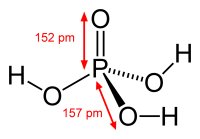Introduction to various acidic substances in Coffee
We all know that coffee contains a lot of organic and inorganic acids, which have a great impact on the taste of coffee, but most people do not have a chance to understand the effects of various acids. The following article will talk about the relationship between various acids and coffee!
One: citric acid-Citric Acid

Citric acid is common in fruits such as lemons and oranges. Do you have sour mouth and saliva when you think of lemons? Yes, this is the power of citric acid, its acidity is high, taste brightness increases, body feeling slightly decreases, does not affect the aroma, this taste can be common in African beans, especially Ethiopia washed beans, parts of Central America can also feel.
Two: malic acid-Malic
Literally, malic acid is also a common organic acid in apples. In fact, it is often used as an additive in the food industry to regulate the pH value of pH. However, malic acid is not as lovely as apples. In fact, its acidity is more rigid than citric acid and phosphoric acid. Although the acidity feeling is not as obvious as citric acid, you can obviously feel a sense of acidity on both sides of your tongue. But it won't make your coffee lively and delicious. It is non-volatile organic acid, so it has no contribution to the aroma, the body feeling is decreased, and the brightness is slightly increased.

Three: quinic acid-Quinic Acid
This is one of the products of chlorogenic acid degradation in the baking process, the acidity is weak, but it will increase the bitterness and astringency, especially the astringency is very obvious, and the taste is rough and uncomfortable, which is very unpleasant. No contribution to aroma, but a slight improvement to body, but who would like to increase the astringency to improve body?

IV: acetic acid-Acetic acid
One of the most common organic acids in daily life, vinegar, fruit vinegar and even in the food industry can be used as additives to improve food flavor. Because acetic acid itself is a volatile organic acid, it is helpful to the aroma, a very small amount of cases will produce a similar fruity flavor, acid feeling lively and bright, only slightly less than the brightness of citric acid, body feeling slightly decreased; however, if acetic acid is added too much, it will cause unpleasant feelings such as fermented smell and vinegar taste, and the acid will become dead acid nausea.

Five: phosphoric acid-Phosphoric
It is the only inorganic acid in coffee acid that needs to come from soil and cannot be synthesized by plants themselves. Phosphoric acid is also a common additive in the food industry, such as the well-known soft drink Coca-Cola has added a lot of phosphoric acid. The acidity of phosphoric acid is very similar to that of malic acid at first, but if you take a closer look, you will find that phosphoric acid brings softer and more comfortable taste to the mouth, making it more comfortable, not as dull as malic acid. Phosphoric acid is also a non-volatile molecule, does not contribute to the aroma, body feeling will be slightly reduced, but slightly pleasant and comfortable taste, Kenyan coffee is the most famous coffee bean rich in phosphoric acid.

Important Notice :
前街咖啡 FrontStreet Coffee has moved to new addredd:
FrontStreet Coffee Address: 315,Donghua East Road,GuangZhou
Tel:020 38364473
- Prev

Introduction to the origin and taste of 16 kinds of high-quality coffee
1.RwandaKivu Rwanda-No introduction: Rwandan coffee beans were introduced to Rwanda by German missionaries in the 20th century. Because of Rwanda's superior climate and unique geographical environment, growing coffee beans has a unique fruity and grassy aroma. There are many planting bases in Rwanda, but the coffee beans produced without machines are even better, not only because of their own.
- Next

Coffee knowledge Starbucks Starbucks Coffee making method
one。 Classic espresso (1) hot drink: 1. American coffee (cafe americano): ingredient: espresso (concentrated) + hot water features: better to retain the original mellow aroma of coffee, refreshing effect is better, the price (21 ~ 24 ~ 27) 2. Latte (cafe latte) ingredients: espresso+ milk + 1 spoonful of milk foam features: espresso mixed with hot milk, covered with a light layer of milk foam
Related
- Beginners will see the "Coffee pull flower" guide!
- What is the difference between ice blog purified milk and ordinary milk coffee?
- Why is the Philippines the largest producer of crops in Liberia?
- For coffee extraction, should the fine powder be retained?
- How does extracted espresso fill pressed powder? How much strength does it take to press the powder?
- How to make jasmine cold extract coffee? Is the jasmine + latte good?
- Will this little toy really make the coffee taste better? How does Lily Drip affect coffee extraction?
- Will the action of slapping the filter cup also affect coffee extraction?
- What's the difference between powder-to-water ratio and powder-to-liquid ratio?
- What is the Ethiopian local species? What does it have to do with Heirloom native species?

